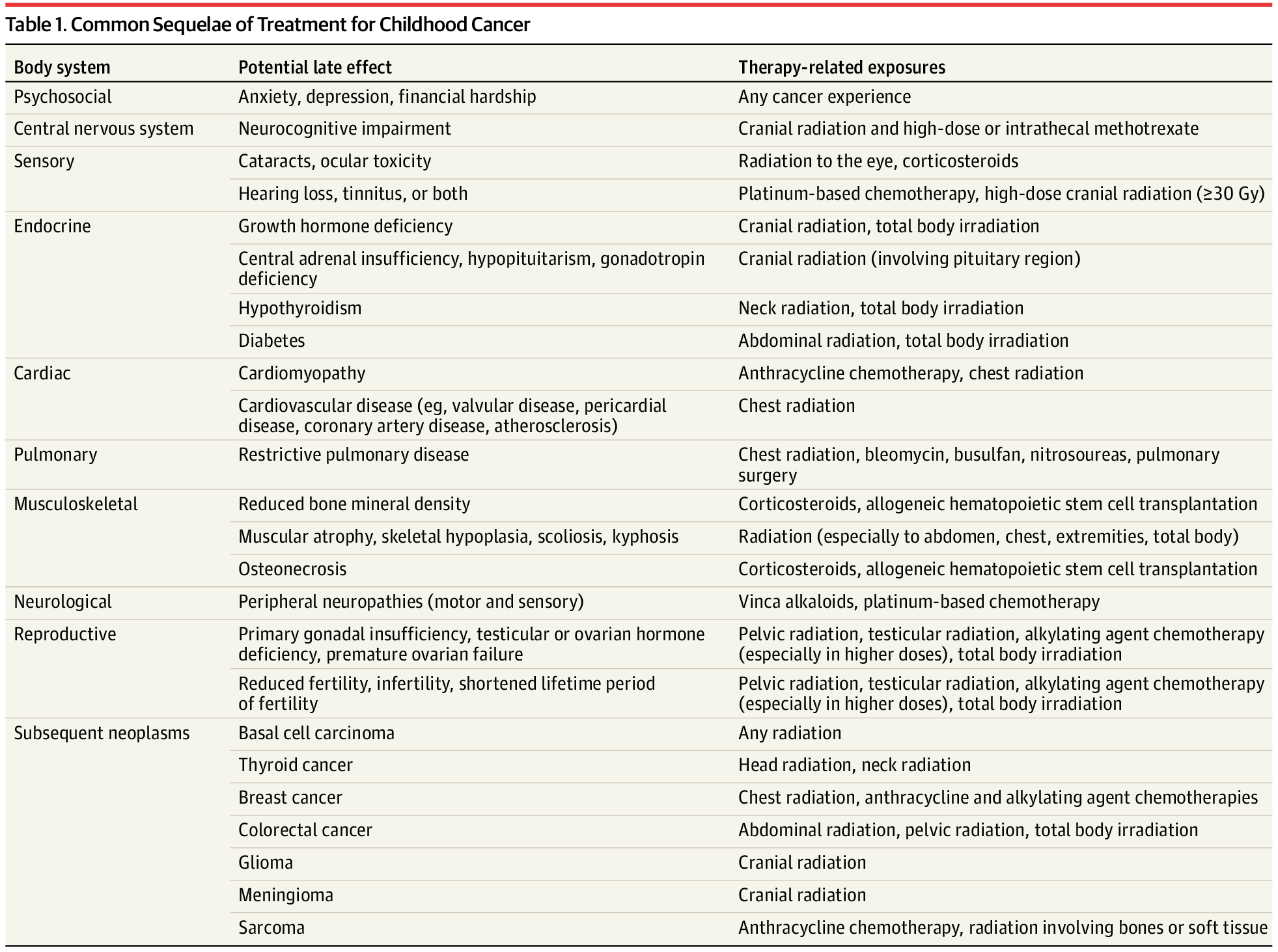Cancer and neoplasms
Clinical Care for People Who Survive Childhood Cancer: A Review
Importance
An estimated 15 000 children and adolescents aged 0 to 19 years are diagnosed with cancer each year in the US, and more than 85% survive for at least 5 years. By 45 years of age, approximately 95% of people who survive childhood cancer will develop a significant health problem related to the childhood cancer diagnosis or its treatment.
Observations
Approximately 500 000 people currently alive in the US have survived childhood cancer. The most common severe or life-threatening chronic health problems related to childhood cancer or its treatment are endocrine disorders such as hypothyroidism or growth hormone deficiency (44%), subsequent neoplasms such as breast cancer or thyroid cancer (7%), and cardiovascular disease such as cardiomyopathy or congestive heart failure, coronary artery disease, and cerebrovascular disease (5.3%). Medical conditions related to a cancer diagnosis during childhood or adolescence are most commonly caused by the radiation therapy and the chemotherapies used to treat cancer and may develop at varying lengths of time after exposure to these treatments. Individuals at highest risk for developing treatment-related health problems include patients with brain cancer treated with cranial irradiation (approximately 70% develop severe or life-threatening health problems) and allogeneic hematopoietic stem cell transplant recipients (approximately 60% develop severe or life-threatening health problems). Individuals at the lowest risk for developing treatment-related health problems include those who survived solid tumors (such as Wilms tumor) treated with surgical resection alone or with minimal chemotherapy, for whom the prevalence of subsequent health problems is similar to people who did not have cancer during childhood or adolescence. People diagnosed with childhood cancer in the 1990s who survived for at least 5 years after the cancer diagnosis have a shorter lifespan (by about 9 years) vs children who were not diagnosed with cancer in the 1990s.
Conclusions and Relevance
Approximately 500 000 individuals currently alive in the US have survived childhood cancer. The most common adverse effects in individuals who survived childhood cancer are endocrine disorders, subsequent neoplasms, and cardiovascular disease. There is a need for clinicians and patients to have heightened awareness of these complications.

